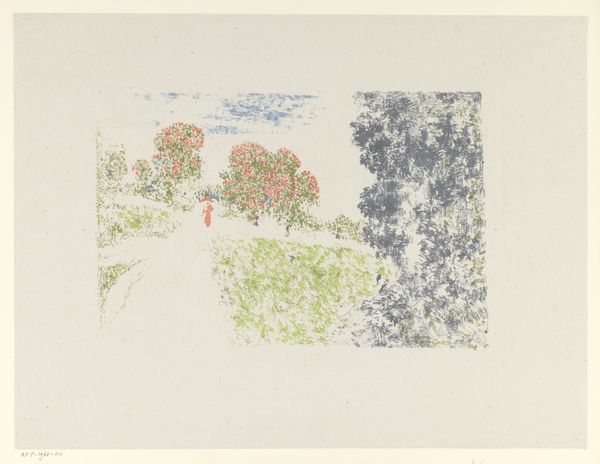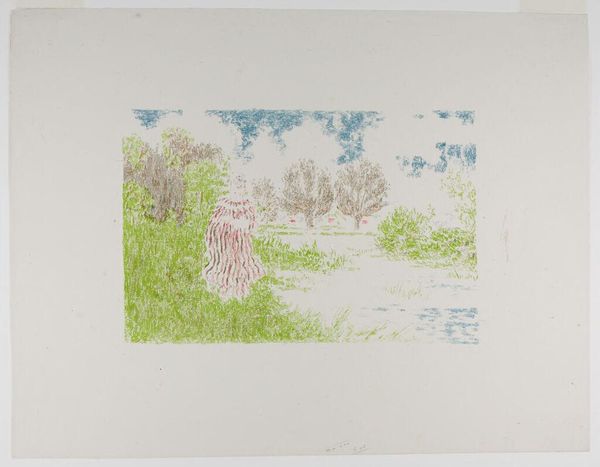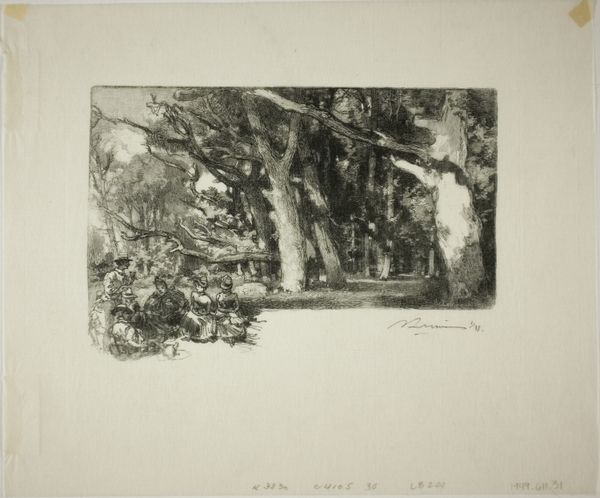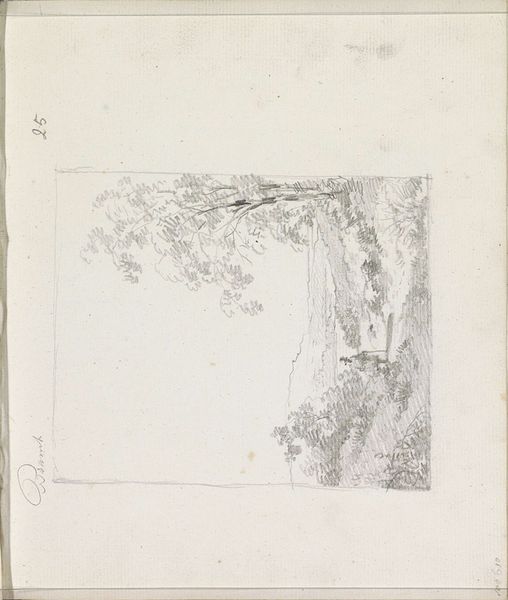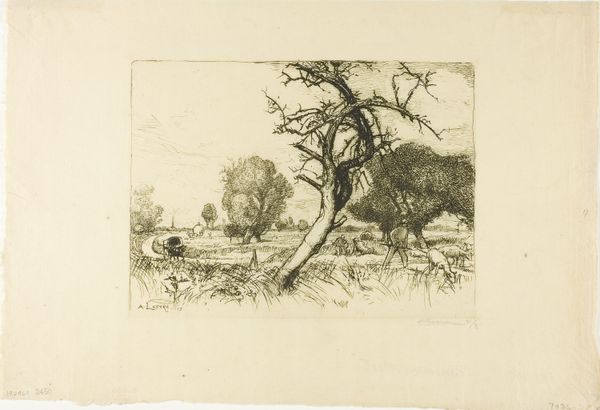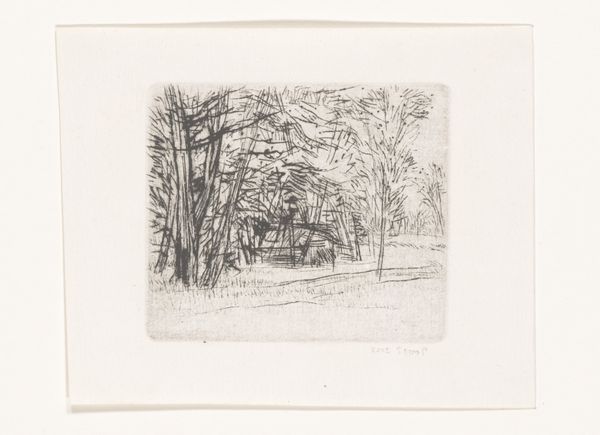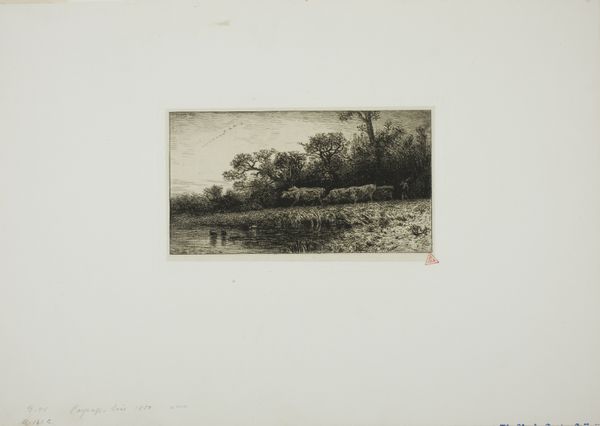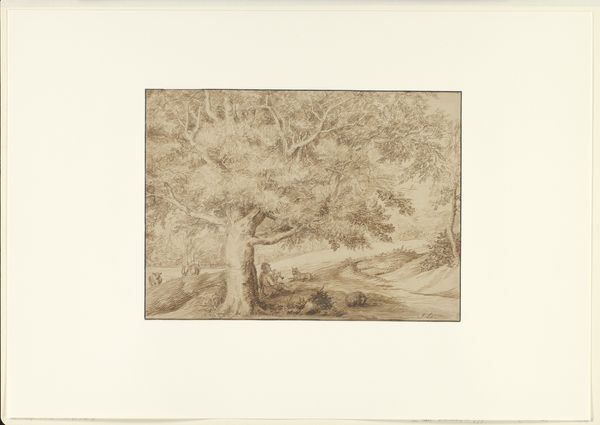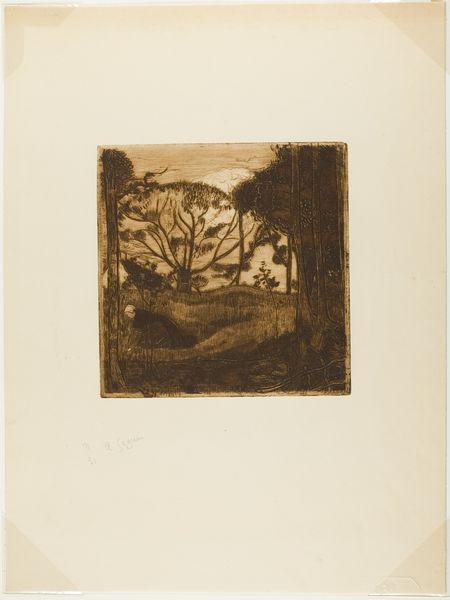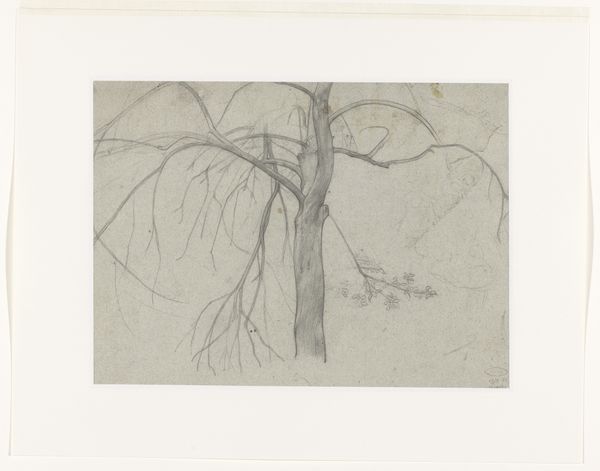
color-lithograph, print
#
water colours
#
color-lithograph
# print
#
possibly oil pastel
#
handmade artwork painting
#
fluid art
#
linocut print
#
france
#
watercolour bleed
#
watercolour illustration
#
mixed medium
#
botanical art
#
watercolor
Dimensions: 8 1/4 x 12 3/4 in. (20.96 x 32.39 cm) (image)15 3/16 x 20 1/16 in. (38.58 x 50.96 cm) (sheet)
Copyright: Public Domain
Editor: This is Ker Xavier Roussel's "Woman in a Striped Dress," a color lithograph from 1899. I'm struck by how delicate it is. The image feels almost like a faded memory. What aspects of this print draw your attention? Curator: Given its medium as color lithograph, I immediately consider the division of labor involved in its production. Someone designed the image, someone else prepared the stones, another printed, and yet another perhaps even colored the final product if more than one stone was used. How does this division and industrial reproduction change the artwork's status, compared to, say, an oil painting executed solely by the artist's hand? Editor: That's a good point. I hadn't really thought about the collaborative aspect. It makes me wonder about the role of the artist here – is Roussel the sole "author" in the traditional sense? Curator: Precisely! This challenges our notion of artistic genius, moving away from the myth of individual creation. Consider too, the materials involved: the lithographic stone, the specialized inks, the paper itself. All are commodities produced under specific social and economic conditions. To truly understand the piece, we need to acknowledge those industrial underpinnings. Does the striped dress have any connections with textile industry at that time? Editor: It’s interesting how considering the materials and production process almost democratizes the art. It feels less like an untouchable masterpiece and more connected to everyday life and the working class. Curator: Exactly. The very availability of prints like this transformed art consumption. How does the availability of images shift cultural values and influence the rise of consumerism during the period? Editor: Thinking about art in this way – as a product of labor and materials – really opens up a new way of interpreting its meaning. It makes me consider art's role in society and economy. Curator: Agreed. By examining the processes, materials, and social context of production, we gain a far richer and more nuanced understanding of the artwork.
Comments
No comments
Be the first to comment and join the conversation on the ultimate creative platform.

